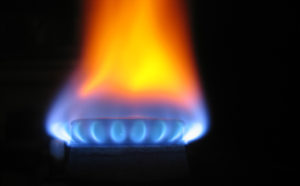 Natural gas fell more than 1.5% to the lowest since the beginning of October as weather forecasters predicted above-average temperatures in key consuming U.S. areas, limiting the power-station fuels demand prospects before the peak winter season.
Natural gas fell more than 1.5% to the lowest since the beginning of October as weather forecasters predicted above-average temperatures in key consuming U.S. areas, limiting the power-station fuels demand prospects before the peak winter season.
On the New York Mercantile Exchange, natural gas for delivery in December fell by 1.72% to $3.520 per million British thermal units by 13:53 GMT. Prices plunged to a session low of $3.512, the weakest level since October 4, while days high stood at $3.578 per mBtu. The fuel lost 2.1% on Thursday, a fourth consecutive daily retreat, and extended its weekly decline to over 5.6% on Friday.
Gas continued to fall amid forecasts for warmer-than-usual weather in key U.S. consuming areas. According to MDA Weather Services in Gaithersburg, Maryland, temperatures across the eastern U.S. will be above-average between November 5 and November 15, limiting demand for the power-plant fuel prior to the peak winter season. Temperatures across the West are projected to be 3 to 8 degrees below the average but demand in Eastern and Midwestern cities tends to weigh more on prices. According to AccuWeather Inc., the low in Boston on November 7 may be 52 degrees Fahrenheit, 12 above usual, followed by a drop to 29 degrees five days later, 10 below average.
When cool weather is expected, natural gas surges as increased electricity demand to power air-conditioning calls for more supply of the fuel, which is used for a quarter of U.S. electricity generation. Average and above-average readings during the winter season have the opposite effect. Consumption usually picks up from November through March. According to the Energy Information Administration, power generation accounts for 32% of U.S. gas demand and 49% of U.S. households use the energy source for heating.
Market players also took into account EIAs weekly natural gas storage report on Thursday, which showed a smaller than the average build, but couldnt shift the energy sources downward momentum and only limited losses. The Energy Information Administration said that U.S. natural gas stockpiles added 38 billion cubic feet in the week ended October 25, well below the five-year average gain of 57 billion cubic feet and last year’s 66 billion increase during the comparable period. Total gas held in underground U.S. storage hubs now equaled 3.779 trillion cubic feet, 3.1% below last year’s 3.899 trillion. The surplus over the five-year average level of supplies narrowed by 0.5% to 1.6%.
Inventories in the East Region received a net injection of 17 billion cubic feet to 1.964 trillion and were 5.8% below last year’s figure. In the Producing Region, stockpiles rose by 18 billion cubic feet to 1.263 trillion and were 0.9% lower than a year earlier.
According to a weekly Bloomberg survey of analysts, the power-station fuel is expected to rebound next week on speculation the arrival of a cold front in parts of the U.S. will boost demand prospects. Seven out of 10 participants polled, or 70%, wagered that prices will rise next week, while one was bearish and two predicted no significant change. Fifty-seven percent of last weeks survey participants wagered that prices will gain this week. The gas survey has correctly predicted the energy sources weekly movement 50% of the time since it was conducted for the first time in June 2004.





